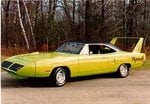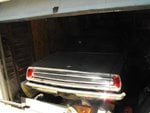wilbur1
Tech Sergeant
Boys..boys...boys when ya gonna learn.......the gt40 is still one of the best cars produced for this stuff. They had the stuntmen for the movie try 3 of em...guess what happend the in surance shut them down and the drivers said its too fast for trying to control on an open road, next they brought in some pro drivers, as soon as they became familiar with the car EVERY single driver was fighting to buy the cars! that tells something right there8)






